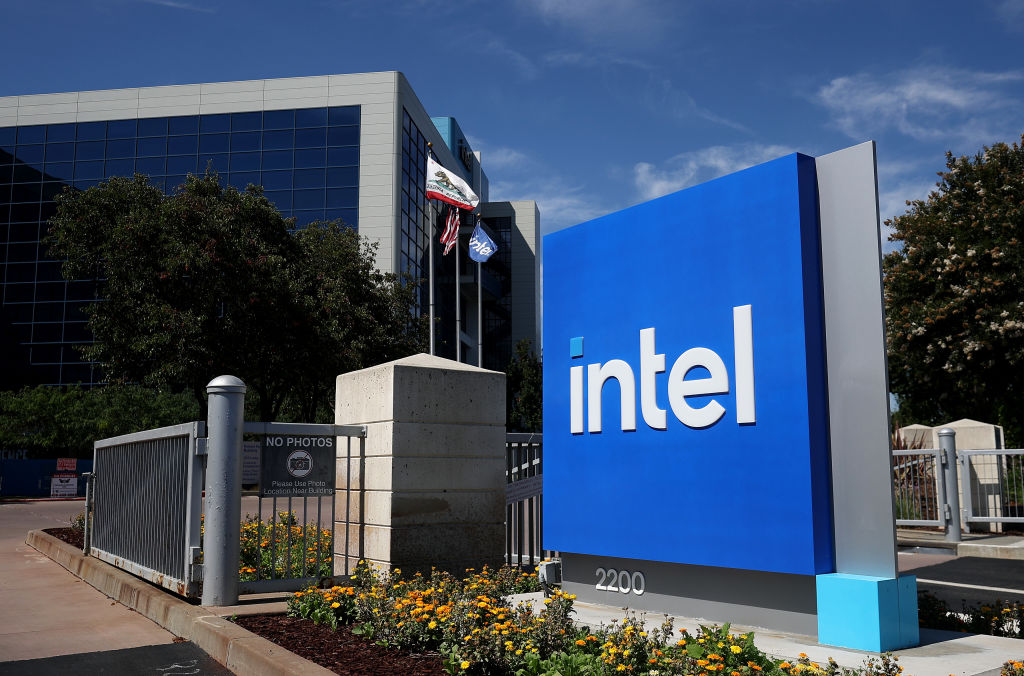Intel Braces for an Even Tougher Road Ahead
Amid a long, costly turnaround, the chipmaker resets expectations again. Its new woes raise questions about U.S. industrial policy and global chip competition.


To help you understand what is going on in the tech sector and beyond, our highly experienced Kiplinger Letter team will keep you abreast of the latest developments and forecasts (Get a free issue of The Kiplinger Letter or subscribe). You'll get all the latest news first by subscribing, but we publish many (but not all) of our forecasts a few days afterward online. Here’s the latest...
It was never going to be easy. But Intel’s latest problems still caught the company, and Wall Street, off guard.
Disappointing revenue and a weak earnings outlook led to the drastic plan to eliminate 15,000 jobs, cut $10 billion in costs in 2025, and suspend the quarterly dividend. In a company memo, CEO Pat Gelsinger pointed out the stark reality that sales were $24 billion higher in 2020 than they were last year, while headcount is 10% higher than then.

Sign up for Kiplinger’s Free E-Newsletters
Profit and prosper with the best of expert advice on investing, taxes, retirement, personal finance and more - straight to your e-mail.
Profit and prosper with the best of expert advice - straight to your e-mail.
The problem was summed up by Morningstar analyst Brian Colello in a recent post: “Even though Intel is doing the proper work to focus on leading-edge chip manufacturing, it appears that many of its customers in various end markets might be leaving Intel behind.”
The frenzied AI investment from Alphabet, Amazon, Meta, Microsoft and others took off faster and will last longer than Intel and others expected. Intel was already losing market share in traditional data center chips. Now the AI boom has crowded out Intel even more, and there’s little sign that will change, as Nvidia’s must-have AI chips continue to gain steam.
Intel’s success or failure is bigger than one company. The chip giant is at the heart of America’s new industrial policy to fend off competition from China and bring chipmaking back home. The federal investment is on top of massive spending by Intel to build new manufacturing facilities, for both its own chips and – for the first time – for outside customers, including some of its own rivals.
Intel could eventually give companies such as Apple and Nvidia an alternative to Taiwan Semiconductor Manufacturing Company, Taiwan’s dominant chipmaker, which builds almost all leading-edge chips. Intel itself has had to outsource production of its top chip designs to TSMC, a clear sign of how much the once-dominant chip giant has stumbled.
If Intel can build a successful manufacturing business for external customers, it would lessen disruptions in global supply chains, and assuage fears that China might invade Taiwan in the not-too-distant future. A revitalized Intel would give chip designers options, rather than being forced to accept TSMC’s technology and prices and hope that nothing happens to threaten Taiwan’s security. It would also meet the growing capacity demands of what will be a $1 trillion chip market by the early 2030s.
“The finish line is within sight,” CEO Pat Gelsinger said to analysts last week, referring to the technology transition at the 56-year-old company.
Recall that before the bold rebuilding plan launched in 2021, some investors were calling for Intel to ditch manufacturing entirely and focus solely on chip design, which would have been a drastic change for a company that tightly integrates and benefits from both phases of the process. It also would have left the U.S. with no leading-edge chip manufacturer and cemented TSMC’s virtual monopoly on high-end chipmaking.
Here are some key takeaways for the next couple of years:
This isn’t the last shoe to drop at Intel. The current round of cost-cutting affects all divisions, but it’s likely that Intel will have to make harder choices, including potentially dropping bigger projects. CEO Gelsinger likens this recent decision, and the overall Intel turnaround plan, to the company’s painful decision to exit the memory chip business 40 years ago. Amid unrelenting competition, the hefty cost cuts risk axing R&D projects that might yield the next big thing for Intel.
Congressional scrutiny is likely, as is stepped-up criticism of U.S. industrial policy. With the federal government committing $8.5 billion to Intel through CHIPS Act subsidies, expect members of Congress to question the layoffs and cost cuts. Gelsinger reiterated that the subsidies are based on hitting manufacturing milestones, which he still expects to hit. Still, there could be more delays for planned projects, such as Intel’s new megaproject in Ohio, which could set off congressional inquiries and further weigh on the beleaguered company.
It won’t happen anytime soon, but expect more calls to split Intel into two publicly traded firms: One company that designs leading-edge chips, and another focused on manufacturing chips for outside customers. The turnaround plan launched in 2021 created those two business lines, but Intel continues to say it’s essential to have both under one roof. Historically, Intel has thrived from both designing and building chips, but investors could push harder for a split to unlock profits. However, such a drastic move is unlikely in the near term, as it would devastate Intel’s strategy to regain chip leadership.
There are some bright spots in the near term. The company has already shipped 15 million units of its AI PC chips and expects to hit 40 million this year. Its latest AI accelerator, which will compete with Nvidia’s product, comes out later this year and will grab at least some market share among AI data center chips. And while it doesn’t have an overall lead, Intel does have a cutting-edge manufacturing capability.
Much of the bold turnaround plan is on track, including doubling down on manufacturing and catching industry leader Taiwan Semiconductor Manufacturing Company. Intel has leapfrogged manufacturing process technologies in a compressed timeline and installed the latest fabrication tools. The company still estimates it will make over $15 billion in yearly revenue from external chip customers by 2030. A promising sign would be if Intel announces Nvidia, Apple or other big names as customers for its chipmaking business.
Intel’s strategic importance, for the U.S. and other nations, gives it a backstop of support. The chipmaker is one of only three firms capable of leading-edge manufacturing, along with Samsung and TSMC. With the U.S. and its allies looking to diversify the supply chain beyond TSMC, there’s built-in support from Western nations and customers looking for a reliable alternative. Still, Intel has to deliver best-in-class manufacturing and prove itself to early customers.
This forecast first appeared in The Kiplinger Letter, which has been running since 1923 and is a collection of concise weekly forecasts on business and economic trends, as well as what to expect from Washington, to help you understand what’s coming up to make the most of your investments and your money. Subscribe to The Kiplinger Letter.
Get Kiplinger Today newsletter — free
Profit and prosper with the best of Kiplinger's advice on investing, taxes, retirement, personal finance and much more. Delivered daily. Enter your email in the box and click Sign Me Up.

John Miley is a Senior Associate Editor at The Kiplinger Letter. He mainly covers technology, telecom and education, but will jump on other important business topics as needed. In his role, he provides timely forecasts about emerging technologies, business trends and government regulations. He also edits stories for the weekly publication and has written and edited e-mail newsletters.
He joined Kiplinger in August 2010 as a reporter for Kiplinger's Personal Finance magazine, where he wrote stories, fact-checked articles and researched investing data. After two years at the magazine, he moved to the Letter, where he has been for the last decade. He holds a BA from Bates College and a master’s degree in magazine journalism from Northwestern University, where he specialized in business reporting. An avid runner and a former decathlete, he has written about fitness and competed in triathlons.
-
 Trump’s Tax Cut Risks Your SNAP, Medicaid Benefits
Trump’s Tax Cut Risks Your SNAP, Medicaid BenefitsTax Cuts The GOP budget blueprint could slash lifesaving programs for millions of U.S. households.
By Gabriella Cruz-Martínez
-
 Can Trump Fire Powell? A Supreme Court Case Could Decide
Can Trump Fire Powell? A Supreme Court Case Could DecidePresidential posts threaten to overwhelm decades of precedent and tradition, whatever the nine justices decide.
By David Dittman
-
 The Economic Impact of the US-China Trade War
The Economic Impact of the US-China Trade WarThe Letter The US-China trade war will impact US consumers and business. The decoupling process could be messy.
By David Payne
-
 AI Heads to Washington
AI Heads to WashingtonThe Kiplinger Letter There’s big opportunity for AI tools that analyze MRIs and other medical images. But also big challenges that clinicians and companies will have to overcome.
By John Miley
-
 Stock Market Today: Dow Drops 699 Points After Powell Speech
Stock Market Today: Dow Drops 699 Points After Powell SpeechFed Chair Powell warned of a slowing economy and higher inflation but said the central bank isn't ready to cut rates just yet.
By Karee Venema
-
 The AI Doctor Coming to Read Your Test Results
The AI Doctor Coming to Read Your Test ResultsThe Kiplinger Letter There’s big opportunity for AI tools that analyze CAT scans, MRIs and other medical images. But there are also big challenges that human clinicians and tech companies will have to overcome.
By John Miley
-
 The New Space Age Takes Off
The New Space Age Takes OffThe Kiplinger Letter From fast broadband to SOS texting, space has never been more embedded in peoples’ lives. The future is even more exciting for rockets, satellites and emerging space tech.
By John Miley
-
 Stock Market Today: Dow Drops Another 2,231 Points to Hit a Correction
Stock Market Today: Dow Drops Another 2,231 Points to Hit a CorrectionThe Nasdaq Composite, meanwhile, entered a new bear market with its latest slide.
By Karee Venema
-
 Stock Market Today: Dow Dives 1,679 Points on Trump Tariff Shock
Stock Market Today: Dow Dives 1,679 Points on Trump Tariff ShockU.S. stocks lost roughly $3.1 trillion in market cap on Thursday – the biggest one-day decline since the start of the COVID-19 pandemic in March 2020.
By Karee Venema
-
 The Stock Market Is Selling Off. Here's What Investors Should Do
The Stock Market Is Selling Off. Here's What Investors Should DoInvestors started fleeing the equities market en masse in response to the Trump administration's "jaw-dropping" tariffs. But the experts say don't panic.
By Karee Venema